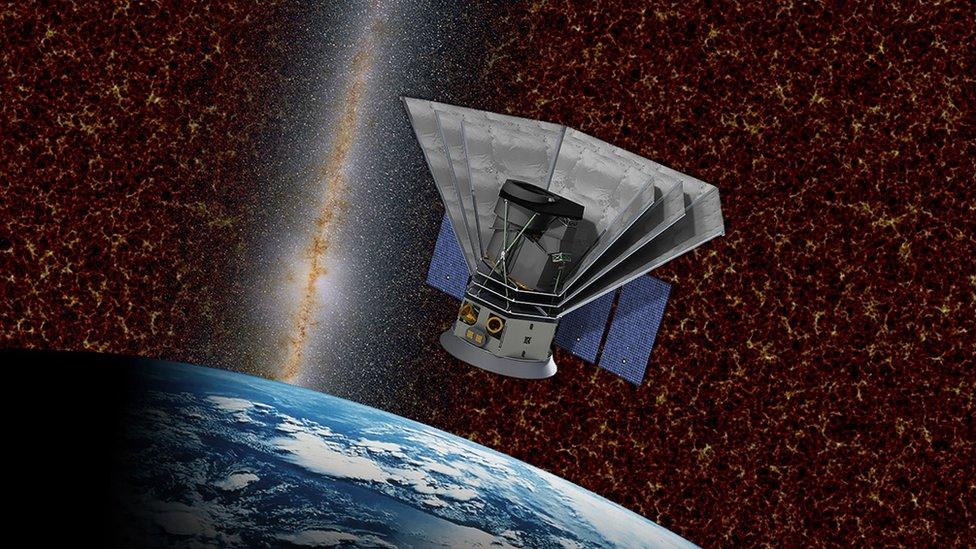Nasa's new telescope SPHEREx one step closer to launch
- Published

Progress is being made on Nasa's new space telescope, SPHEREx.
The Spectro-Photometer for the History of the Universe, Epoch of Reionization and Ices Explorer (SPHEREx) mission is a two-year mission scheduled for Summer 2024.
Its destination is Earth's orbit, where it will gather data on more than 300 million galaxies, as well as more than 100 million stars in our own Milky Way.
The SPHEREx team completed a design review with Nasa in October 2020.
Now it has been signed off, work can begin to finalise, develop and manufacture, the hardware and software required for the mission.
Once launched into orbit, SPHEREx will survey hundreds of millions of galaxies near and far, some so distant their light has taken 10 billion years to reach Earth.
It will create a map of the entire sky and identify targets for more detailed study by future missions, such as Nasa's James Webb Space Telescope, which launches later this year.
SPHEREx : MISSION OBJECTIVES
Look for evidence of the causes for the expansion of space
Study the history of galaxy formation and how the first galaxies formed stars
Look for water ice and frozen organic molecules - the building blocks of life on Earth - around newly forming stars in our galaxy
In the Milky Way, the mission will search for water and organic molecules - essentials for what we understand is needed for life to exist.
The size of small car, the space telescope will map the stars using a technique Spectroscopy.
Graphic view of our Milky Way Galaxy. The Milky Way Galaxy is organized into spiral arms of giant stars that illuminate interstellar gas and dust.
Spectroscopy is one of the main ways scientists can study the Universe. It is a sophisticated technique astronomers use to understand the spectral lines between atoms and molecules and SPHEREx tech will enable the splitting of light into its individual wavelengths, or colours.
This data can reveal what an object is made of, because individual chemical elements absorb and radiate, or give off, specific wavelengths of light.
It can also be used to estimate an object's distance from Earth.
SPHEREx will be the first Nasa mission to build a full-sky spectroscopy map in near-infrared, and it will observe a total of 102 near-infrared colours.
"That's like going from black and white images to colour; it's like going from Kansas to Oz," said Allen Farrington, the SPHEREx project manager.
At $242 million dollars (that's almost 拢180 million) it's a big project, and that doesn't include the launch costs!
But if the mission achieves what it sets out to there's hope it could answer some of the many questions still left unanswered in the Universe - like the 'Big Bang', and how it all began?
- Published6 January 2021
- Published5 December 2020
- Published23 September 2020
- Published18 March 2014
